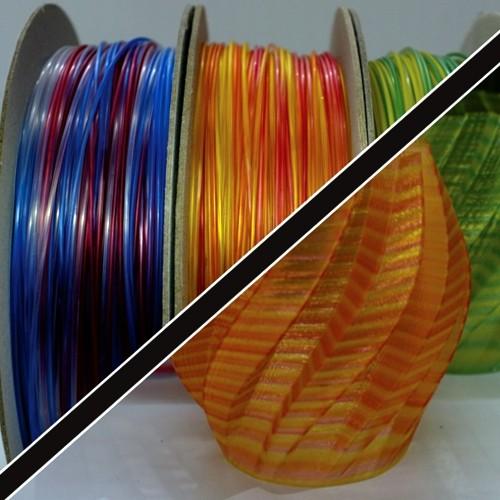
The ABS 3D printing filament is the godfather of the 3D printing world. As one of the first plastic types to be used in industrial 3D printing, it has become a staple material due to its affordability and exceptional mechanical properties. Despite many 3D printing filaments coming out that are easier to print with and are more remarkable in its capabilities, ABS is still considered the classic legend when it comes to 3D printing. Read below to learn more about ABS.
What is ABS: Features, Strengths, and Weaknesses
- Affordable
- Versatile
- Excellent impact and wear resistance
- High heat resistance
- Prone to warping
- High risk of shrinkage and dimensional inaccuracy
- Emits noxious fumes
Affordable
ABS is one of the most affordable filaments, making it a favorite among businesses to use for their additive manufacturing needs. They cost businesses very little when producing functional prototypes, concept modelling, and tooling.
Highly versatile
If it’s versatility you’re looking for, then the ABS filament surely won’t disappoint. It can be used for a wide range of purposes and comes in a variety of colours, making it an ideal material for automotive hardware, prototypes requiring strength and durability, protective cases, and even LEGO and other toys and action figures.
Excellent mechanical properties
With regards to its mechanical properties, ABS is also a force to be reckoned with on its own. It is popular for its toughness and impact resistance, which makes it a popular filament for prints that undergo rigorous stress.
High glass transition temperature
The glass transition temperature of ABS is remarkably high. It means that the 3D prints can stand tough against extremely high temperatures without deforming. This capability makes it a good material for parts or products that are used outdoors or in extremely hot environments.
However, ABS does present some limitations. Due to its strong and tough build, it can be difficult to print with. Here are the issues you may run across while 3D printing with ABS.
Heavy warping
Since ABS has a high melting point, it easily contracts and shrinks down when it is cooled down to room temperature. When this happens, it increases the risk of the first layer separating from the bed, which then causes the print to warp. It is important to use a heated bed or chamber to prevent this from happening.
Dimensional inaccuracy
Since ABS requires a high extruder temperature, rapid temperature changes can introduce shrinkage which can then affect the dimensional accuracy. It is important to keep the temperature consistent throughout and prevent cold air from coming in by using an enclosure and heated bed.
Noxious fumes
ABS emits strong fumes during 3D printing, so it is important to make sure that your room is well-ventilated. You should also turn on your 3D printer’s filter or fan or use an enclosure to keep the fumes at bay.
3D Printing Guidelines of ABS
Recommended extruder temperature: 210-250 °C
Recommended bed temperature: 110 °C
Heated bed and enclosure required
- Use a heated bed and enclosure. ABS is sensitive to temperature changes. To prevent any issues during printing, such as warping or shrinkage, you should use a heated bed and enclosure to maintain a consistent temperature throughout printing.
- Print in a well-ventilated room. ABS has noxious fumes, so printing in a workspace with good ventilation is a must. If your printer is equipped with filters or fans, you should also turn it on to prevent the fumes from coming out of the machine.
- Print at a higher temperature at the beginning. ABS has problems with first layer adhesion. It is recommended to print with 10 to 20 degrees higher than standard extruder temperature at the beginning to make sure the first few layers stick well to the bed.
- Use brims and rafts. Printing larger prints can increase the risk of warping. To prevent this, add a brim or raft to your model to help it stick more to the bed.
- Improve layer adhesion. Since one of the most pressing problems of ABS printing is its layer adhesion, you need to take several steps to improve it. First, use a Kapton tape or Dimafix Pen on your print bed. You could also DIY your own adhesive by creating an ABS slurry. It is a mixture of a bit of ABS filament and acetone painted over your bed.
- Store ABS in a cool and dry place. ABS is hygroscopic, meaning that it absorbs moisture from the air. Make sure to store in a cool and dry place.
Best ABS Filaments on the Market
X3D Pro ABS
X3D Pro Glow ABS
X3D Pro ABS Conductive
FormFutura ABSpro Flame Retardant
FormFutura Titan X
FormFutura Recycled Titan X
Polymaker PolyLite ABS
Need ABS in your life? Order from us today!
3D printing with ABS may not be for the faint of heart but its strengths make it more than worth your time and effort. Interested in trying ABS? If you have any questions on how to use them, you can contact x3d@x3d.com.au or (08) 6380 7488.

